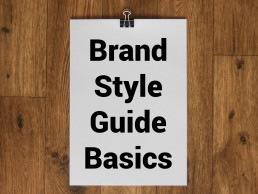Brand Style Guide Basics
Once you know who you are (your brand) and what you want to communicate (your branding), the next important step is to create a Brand Style Guide. Now you may be asking what is a Brand Style Guide? – it sounds complicated. Really it is very simple. It is just a set of structure to communicate the brand consistently. It will be used as a reference by staff and volunteers when they are creating communications.
So how do you get started on your own Brand Style Guide?
First you will need to assess where you are. Do you have a strategy already in place? Are you already being authentic and consistent? Then all you need to do is write down what you are doing in a style guide so everyone can follow it and stay consistent.
Do you have a logo that you use consistently and that communicates your brand? If you do, great, you can work with that. If not, you can change or create one.
A few notes about your logo. You need to think seriously about your logo and what it represents. Your logo does not need to say everything about your organization or your brand, just one thing that is really at the core of your brand.
When people are asked about what makes a logo good memorable, most people answer answer simplicity. Keeping your logo simple makes it easier for people to recognize and easier for you to use.
Many organization use an image of the building as their logo, while this is an easy connection, we need to remember that your organization is about people, not your building. Does your building communicate your brand? There are many copy and paste logos, but do these communicate your brand? Remember you want your logo and brand to stand out and represent the uniqueness of your organization.
Once you have your logo in place, you can use this as a basis to create the other aspects of your branding guide.
The main font should tie back to your logo. If your logo uses a font that is legible and easy to read, then you can use this font. But if you are using a script or a display font, then you should pick a complementary font.
The color pallet again should stem from your logo. You should pick colors from your logo and then add complimentary colors.
These are the the main points. If you want you can also include things like a brand overview, taglines, writing style, photography, sub-brands, web standards, key messages, etc.
The last step is to share it with your staff and volunteers.
